In this article I’ll be answering some frequently asked questions regarding deck building in singleton formats. We’ll start with questions about specific thresholds and end with broader questions with more subjective answers.
Methodology
A benchmark is defined here as the probability of satisfying a requirement by a certain turn. All benchmarks in this article are calculated assuming you’re on the play. Whether or not a particular benchmark is good enough for your use case is subjective, so use your best judgement. The rubric I will be using is:
- 75%: ok
- 85%: good/reliable
- 90%: very reliable
Thresholds are defined as the number of enablers needed to achieve their benchmarks.
When calculating benchmarks and thresholds, the population size will generally be min_deck_size - 1, since we are often describing the situation where the specific card to be enabled is in hand. Turn 1 calculations therefore start with a sample size of 6 and add 1 for each additional draw step. The threshold closest to the benchmark within -0.5% was chosen in each example.
TL;DR Table
| Requirement | Enablers | Turn | Benchmark | 100 Card Threshold | 60 Card Threshold |
|---|---|---|---|---|---|
| Force of Will, Force of Negation, Subtlety | Other blue cards | 1 | 85% | 26 | 16 |
| Casting one drops | Colored sources | 1 | 85% | 26 | 16 |
| Solitude, Grief, Fury, Endurance | Evoke fodder | 2 | 85% | 23 | 14 |
| Casting 1M | Colored sources | 2 | 85% | 23 | 14 |
| Casting MM | Colored sources | 2 | 75% | 33 | 24 |
| Casting 2M | Colored sources | 3 | 85% | 20 | 12 |
| Casting 1MM | Colored sources | 3 | 75% | 30 | 21 |
| Casting 3M | Colored sources | 4 | 85% | 18 | 11 |
| Casting 2MM | Colored sources | 4 | 75% | 27 | 19 |
| Mystic Sanctuary | Other Islands | 3 | 33% | 23 | 14 |
| Tinker | Artifacts mv<=2 | 3 | 90% | 24 | 14 |
| Natural Order | Green creatures mv<=3 | 3 | 90% | 24 | 14 |
| Lurrus | mv<=2 stuff | 4 | 85% | 18 | 11 |
| Beseech the Mirror | Bargain fodder | 4 | 85% | 18 | 11 |
| Proactive plays | Turn 1 plays | 1 | 66% | 14 | 9 |
| Proactive plays | Turn 2 plays | 2 | 75% | 16 | 9 |
| Proactive plays | Turn 3 plays | 3 | 75% | 14 | 8 |
Thresholds and Benchmarks
How many other blue cards do I need to reliably cast Force of Will on turn 1?

| Benchmark | 100 Card | 60 Card |
|---|---|---|
| 85% | 26 | 16 |
| 90% | 31 | 18 |
You need at least 26/100 or 16/60 other blue cards, 27/100 or 17/60 total including Force to reliably cast it turn 1. But why turn 1? When is the earliest we need Force of Will to be online? To answer this, we need to think about the best possible draws our opponents could have that can be stopped.
In Canadian Highlander, it is possible yet exceedingly rare for combo decks to kill you on turn 1. For reference, in my personal testing the percentage of turn 2 kills from Lotusless Breach Storm and Doomsday were both below 3% over several hundred games. After Flash was increased back to 7 points in 2023, Lotus Breach is probably the deck with the fastest average-turn kill, which I estimate as slightly under 3.5 turns.
So if you are unlikely to die to combo on turn 1, what is the most threatening thing that could likely happen to you on turn 1 that is worth Forcing?

When considering the range of possible opening hands for aggro and midrange decks, the most powerful openers include combinations of fast mana that accelerate out 3-drop on turn 1. Mana Crypt is the most prominent culprit of such starts that warrants Forcing, but keep in mind this range includes cards like Moxen and Ancient Tomb.
But do such openers happen often enough to require a consistent turn 1 Force response? Let’s only consider Mana Crypt during mulligans:
100
probability of finding Mana Crypt when mulliganing to 5
.07 + (.93 * .07) + (.93^2 * .07) =
.07 + .0651 + .06 = .1951
probability of finding Mana Crypt at least once in a 3 game match
.195 + (.805 * .195) + (.805^2 * .195) = .478
60
.1167 + (.8833 * .1167) + (.8833^2 * .1167) =
.1167 + .103 + .091 = .3107
.31 + (.69 * .31) + (.69^2 * .31) =
.31 + .214 + .147 = .671A player that is willing to mulligan to 5 is almost 20% to find their Mana Crypt in Canlander. With this mulligan strategy, they are 47.8% to have at least one Mana Crypt opener in a three game match! In 7 Point Highlander, these percentages rise to a disgusting 31% chance per game and 67.1% chance per match. No wonder it went up to 5 points.
I’m not saying you must mulligan towards your Forces if you see your opponent mulliganing aggressively, but running at least 27/100 or 17/60 blue cards will give you a good chance for your forces to be online turn 1 should you need them.
Importantly, if you are running blue cards that are crucial to your game plan like Thassa’s Oracle or Flash, you should NOT count those towards your minimum blue card count if you cannot win the game with them exiled.
How many other cards do I need to enable the Modern Horizons II elementals?

| Benchmark | 100 Card | 60 Card |
|---|---|---|
| 85% | 26 | 16 |
| 90% | 31 | 18 |
Like with Force of Will, the most common reason to need Subtlety on turn 1 is to stop an accelerated 3-drop. If you were already playing Force of Will/Negation, Subtlety will be enabled for free.
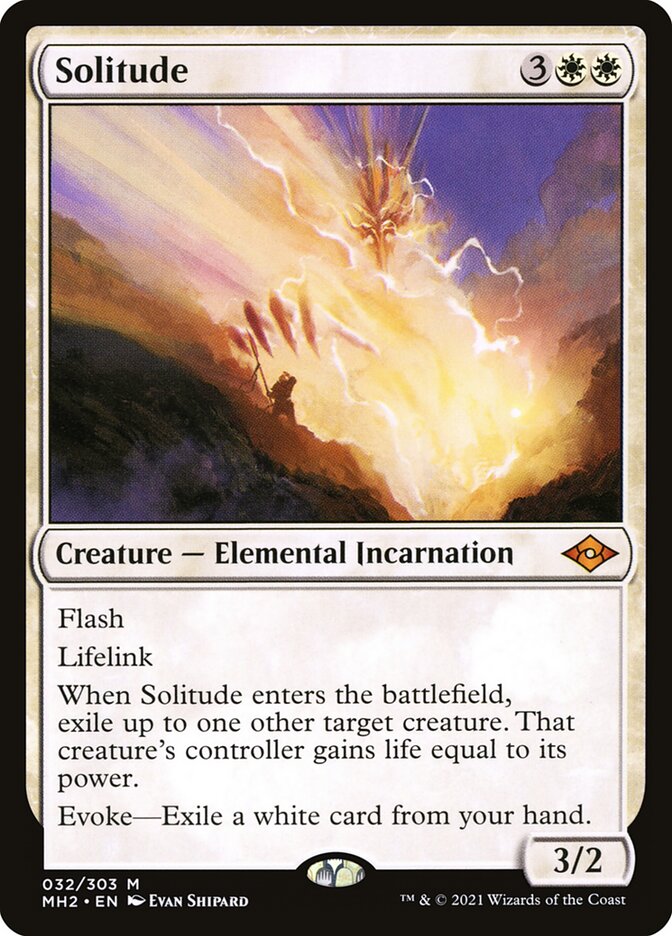
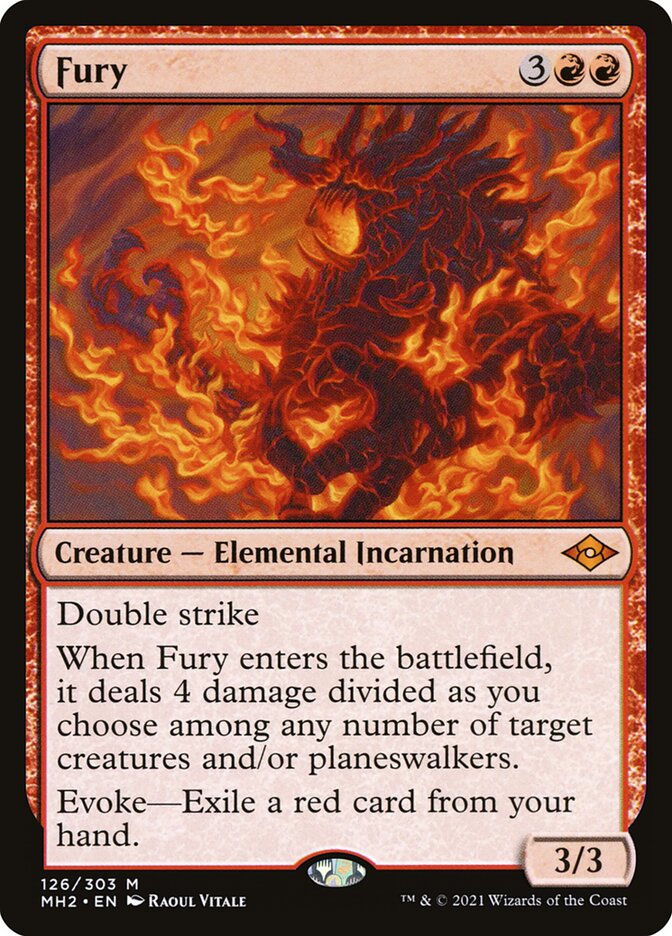
| Benchmark | 100 Card | 60 Card |
|---|---|---|
| 85% | 23 | 14 |
| 90% | 27 | 16 |
Unlike Subtlety, Solitude and Fury do not need to be played on the same turn the threat is deployed. If your opponent plays something threatening turn 1, you will have an additional draw step to find a piece of convoke fodder, hence the lower requirements.
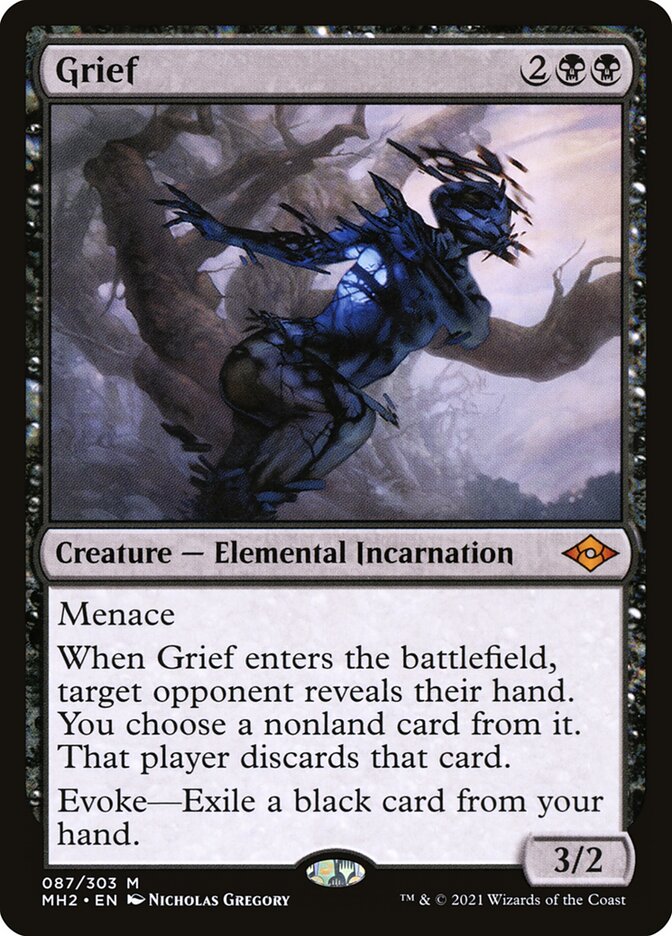
Grief is a bit different from the other elementals in that it doesn’t act as an emergency button like Subtlety or Endurance, nor as an answer to the opponent’s board state like Solitude or Fury. It is valuable in the first few turns, becomes bad when the opponent empties their hand, but regains value if the opponent tutors or draws multiple cards. So at what point should it be reliably enabled?
It can be appealing to enable a turn 1 Grief if you are running reanimation spells, but it isn’t very likely to have both Grief and Reanimate in your opening hand (100: 0.42%, 60: 1.18%). So taking into consideration that there are more reanimation spells at 2 mana, along with the desire to hit combo decks before their potential turn 2 nut draws, aiming to enable a turn 2 Grief on the play seems reasonable.

Generally, the earliest you need Endurance in Canlander is against a turn 2 draw from Breach Storm or a turn 1 Entomb into turn 2 reanimation from Reanimator. There are a few turn 1 nut draws from Reanimator, but those require specific combinations of Entomb + Dark Ritual or Entomb + Reanimate + fast mana. Thus, it probably isn’t worth building for a turn 1 Endurance unless you play against a lot of fast graveyard combo.
With all that said, Endurance is also the most competitively costed of the elementals. It is a reasonable threat to hard cast on curve in most fair matchups, so if you want to run it and don’t face much graveyard combo, you don’t need to meet the turn 2 benchmark, since there isn’t as much risk of it being stranded in hand as the other elementals.
How many mana sources do I need to cast my spells on curve? What is the minimum number of sources for a splash?


| Goal | Benchmark | 100 Card | 60 Card |
|---|---|---|---|
| One Drops | 85% | 26 | 16 |
| 90% | 31 | 18 | |
| Casting 1M | 85% | 23 | 14 |
| 90% | 27 | 16 | |
| Casting MM | 75% | 33 | 24 |
| 85% | 40 | 26 | |
| Casting 2M | 85% | 20 | 12 |
| 90% | 24 | 14 | |
| Casting 1MM | 75% | 30 | 21 |
| 85% | 35 | 24 | |
| Casting 3M | 85% | 18 | 11 |
| 90% | 22 | 13 | |
| Casting 2MM | 75% | 27 | 19 |
| 85% | 32 | 21 |
Notice how sharply the number of required sources increased for cards with two of the same pip (MM). Maintaining 85% reliability for MM requires a 74%-86% increase in sources from 1M! For this reason I do not advise playing MM cards in more than one color, as even two color decks struggle to have enough sources of both colors.
For splashes, you can use the benchmark of the mana cost corresponding to the turn you’re trying to cast the splashed card. Cards of mana value 4 and higher or for turns 4 and later are not too difficult to splash, whereas splashing 2-drops on curve is very demanding on the manabase.
This Jeskai Green decklist is an example of a manabase stretched to its absolute limits. It is trying to achieve:
| Mana cost | Mana sources | Benchmark |
|---|---|---|
| UU | 30 | 68.6% |
| 1R | 21 | 82.2% |
| 1G | 21 | 82.2% |
| 1W | 20 | 80.5% |
If you want to play all the powerful spells across 4 colors, some compromises have to be made in lowering benchmarks. It often becomes a balancing act where you do your best to enable the most important cards and cut anything unnecessary.
How many lands can I cut for each 1 mana landcycler in my deck?

About .9 each if you run at least 31/100 or 18/60 lands.
A 1 mana landcycler only counts as a mana source if you have at least one other mana source to pay the cycling cost. Thus, the number of lands they replace can be approximated as the probability you can cycle them in the opening hand. E.g. if you are 90% to have at least 1 land in your opening hand when you have a landcycler, then 90% of the time it “is” land, and 10% of the time it isn’t. (.9 * 1 land) + (.1 * 0 lands) = .9 lands.
The lowest number of mana sources you can run while maintaining 90% reliability is 31/100 or 18/60.
How many other Islands do I need to enable Mystic Sanctuary by turn 4?
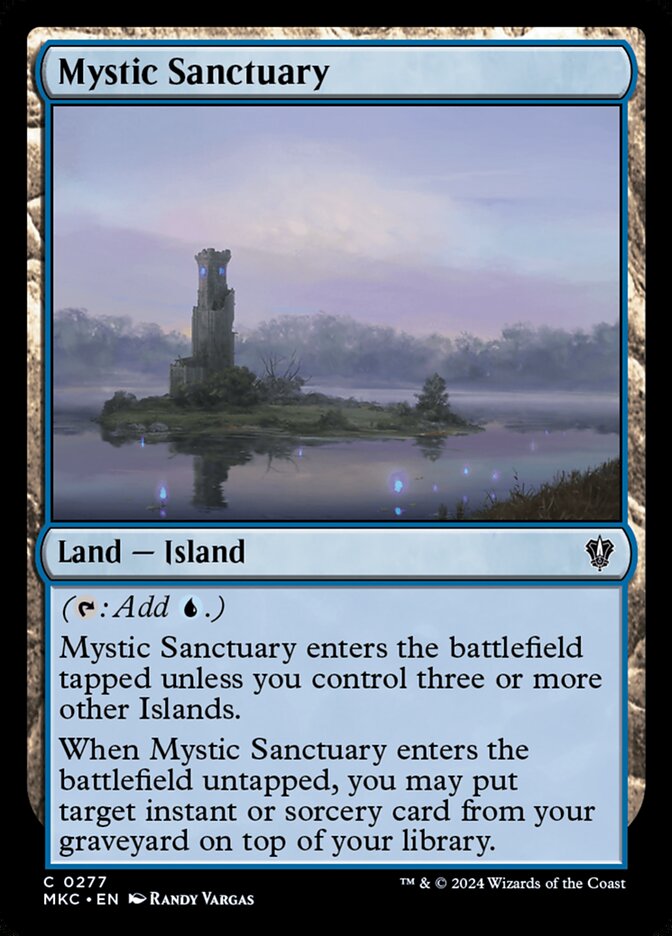
| Benchmark | 100 Card, Sanctuary in library | 60 Card, Sanctuary in library | 100 Card, Sanctuary in hand | 60 Card, Sanctuary in hand |
|---|---|---|---|---|
| 33% | 23 | 14 | 26 | 15 |
| 50% | 29 | 17 | 32 | 19 |
| 66% | 35 | 21 | 38 | 23 |
| 75% | 39 | 23 | 43 | 25 |
- As a reminder, you should count all fetchlands capable of fetching an Island (as well as Lorien Revealed) as “Islands”.
- Turn 4 is an admittedly aggressive benchmark, but ideally you should try to get 3 Islands in play as soon as possible so that Sanctuary becomes a fetchable option on future turns.
- In practice, most multicolor decks can’t play 35/100 or 21/60 Islands, so 33-50% tends to be a more realistic benchmark. It often boils down to just running as many Islands as you can while still being able to cast your spells on curve.
- The probabilities get noticeably worse when you have Sanctuary in your opening hand, which unsurprisingly makes it an unappealing card to see when mulliganing.
How many artifacts do you need to for Tinker?

| Turn 3 | 100 Card | 60 Card |
|---|---|---|
| 90% | 24 | 14 |
Since many Tinker payoffs can’t be reasonably cast, I recommend using a stricter 90% benchmark to avoid delays and possibly drawing those payoffs. Remember that you can play artifact lands to increase the threshold.
How many green creatures do you need for Natural Order?

| Turn | Benchmark | 100 Card | 60 Card |
|---|---|---|---|
| Turn 3 | 90% | 24 | 14 |
| Turn 4 | 90% | 22 | 13 |

If you’re playing deck with green mana dorks, you can assemble 4 mana with a mana dork and 3 lands by turn 3 fairly reliably. In this case you would most likely want to Natural Order for an independently impactful creature like Atraxa, Grand Unifier.

However, if you’re going for Craterhoof Behemoth, you usually want to have at least 3 untapped creatures without summoning sickness or defender on board when Natural Order resolves to properly one-shot your opponent for 21+ trample damage. You’d need an excellent draw of 4 creatures, 3-4 lands and Natural Order by turn 3 for the turn 4 hoof kill, but enabling that out is valuable.
How many synergy pieces do I need for Lurrus to be active on turn 4?

| Benchmark | 100 Card | 60 Card |
|---|---|---|
| 75% | 14 | 8 |
| 85% | 18 | 11 |
| 90% | 22 | 13 |
There aren’t many 0 mana artifacts with sacrifice abilities, so being able to use Lurrus on turn 3 is more of a high roll than an expectation. If you are running an aggressive or midrange deck with Mox Pearl and/or Mox Jet, you will likely already be playing enough 1 and 2-drops after filling out your curve for Lurrus to be good.
How much bargain fodder do I need for Beseech the Mirror?

| Benchmark | 100 Card | 60 Card |
|---|---|---|
| 85% | 18 | 11 |
| 90% | 22 | 13 |
Beseech plays particularly well with mana rocks and eggs that draw a card upon going to the graveyard.
Remember to count spells that create tokens towards your Beseech count. Do not count combo pieces that need to remain in play like Time Vault or Underworld Breach. You probably shouldn’t count Black Lotus if you intend to tutor for a card of mana value 3 or less, since it would be better used towards paying Beseech’s mana cost.
What is the probability of drawing 2 specific cards in a given game by turn 4?


| Cards drawn | 100 Card | 60 Card |
|---|---|---|
| 10 | .91% | 2.54% |
| 13 | 1.58% | 4.41% |
| 20 | 3.84% | 10.73% |
People are often enamored by the idea of putting two-card combos in their decks, especially if the cards are individually reasonable in a fair capacity. But the truth is, if you are not playing multiple tutors to find both cards, you will not realistically assemble your two-card combo with any degree of consistency.
Singleton is a different beast from 60 card 4x constructed. We do not have the luxury of running multiple copies of combo pieces, nor are we able to run multiple copies of Ponder and Brainstorm. This means density-based combo decks like Cephalid Breakfast in Legacy are particularly difficult to replicate in singleton.
So the next time you feel tempted to run Witherbloom Apprentice and Chain of Smog in your BG/X midrange deck, be honest with yourself in judging if it’s actually well supported or just a dream.
Broader Questions
How do you know if a card is good enough to see play?
Here are some questions that can help determine if a card is worth playing:
1. Is it good enough on rate?
Rate is a relative measure of how much a card does compared to others of the same cost. For example, the playability of creatures of a given mana value depends on a combination of power, toughness, keywords and abilities. The fewer keywords and abilities one has, the more rate we expect to be allocated into power and toughness. Conversely, weaker stats can be tolerated on creatures with very powerful abilities.
Judging if a card is good enough “on rate” is in some sense a matter of knowing where it falls in comparison to all other cards with similar effects. This can seem like a daunting knowledge check when it comes to the vintage card pool (~26,600 cards at time of writing). Fortunately, most cards suck. It is generally sufficient to know what the best couple cards are for any given effect, and any card that comes close is worth considering in highlander. Once you have a general sense of what a good version of an effect is, disqualifying cards for being bad on rate becomes an easy matter.
Let’s look at Anointed Peacekeeper.

Does it have satisfactory power and toughness? At 3/3, yes. In fact, if you sort all mono-white 3-drops by power, you’ll find (at time of writing) there are only 4 creatures with more power: two have defender, one requires 5 devotion, and the last has an additional casting cost.
How about its abilities? Vigilance is a nice keyword on well-statted creatures, especially for decks looking to introduce emblems like the Monarch or the Initiative. The ability to look at an opponent’s hand and make any card or card’s ability cost 2 more is relevant in practically every matchup and will almost always be relevant on turn 3 and earlier.
What about its mana cost? 2W is as easy as it gets for color requirements and “Ancient Tomb” mana.
In summary, we have a well-statted 3 drop with Ancient Tomb mana, that has an enters ability relevant in all matchups, and a good keyword for fighting over emblems. It’s also a human, a creature type with many competitive synergy payoffs. Without any metagame considerations, Anointed Peacekeeper passes the bar as a good card on rate that can fit into a wide range of creature decks.
2. Is it similar to other good cards?


A card is probably good when it is very similar to a known good card. Singleton formats make good use of functional reprints, as it is often challenging to assemble a density of good effects for consistency.
3. Is it better than the worst card of a given role in a deck?


For a new card to see play, it doesn’t have to be comparable to your best cards. It just has to be better than the worst card you’re currently playing for a given role.
4. Does it solve a specific problem for your deck?

Sometimes a “bad” card can shine if it’s the best solution to an important problem. For Doomsday piles, Deep Analysis is the cleanest out for when you have no cards in hand, do not have 2 Islands for Gush, and only have U available after casting Doomsday. When you come across a card that is the best at doing a very specific thing, keep it in the back of your mind. You never know when the right problem will come along that allows it to shine.
5. Is it well positioned in your meta?

These cards often sit in your maybeboard, waiting for the right meta to reappear.
How many copies of X effect should I run?
Removal
The unhelpful answer is “play all the good ones”. To elaborate, White, Black and Red each have a small number of removal spells that strike a good balance between mana efficiency and coverage. They mostly cost 1 mana, with the 2 mana removal generally hitting more than just creatures.
Below is a non-exhaustive list of commonly played “good” removal spells (at time of writing):
- White
- Swords to Plowshares
- Prismatic Ending
- Path to Exile
- March of Otherworldly Light
- Get Lost
- Fateful Absence
- Solitude
- Black
- Fatal Push
- Cut Down
- Dismember
- Sheoldred’s Edict
- Bitter Triumph
- Snuff Out
- Red
- Lightning Bolt
- Chain Lightning
- Forked Bolt
- Flame Slash
- Strangle
- Unholy Heat
- Fury
- Multicolor
- Abrupt Decay
- Molten Collapse
Decks playing two or more of the above colors can afford to be more selective in what removal they run. Blue decks running counterspells make great use of instant speed removal, as it grants them additional flexibility in responding to threats with the mana they hold up.
In 60 card 4x formats, your removal suite is carefully tailored to the threats of the expected metagame, with additional room in the sideboard for finer adjustment. We have to reach deeper in singleton to achieve similar density, and often the quality drops off too quickly past a certain point. While the range of threats you could encounter is quite wide, remember that those threats will likely be distributed along a common mana curve. This means we’ll statistically see the best results if our removal suite is distributed in a similar fashion, with the majority being 1 mana spells to deal with cheap creatures and a sparing number of 2+ mana removal to deal with more expensive creatures and planeswalkers.
Tutors
The most efficient tutors are enshrined in the points list. Most combo decks would like to run them when their points allow for it. The more interesting question is which among the unpointed tutors are worth running and how many. For combo decks, the desired number of tutors depends on which combos are being run and how all-in those combos are.



All-in combo decks such as Doomsday or Breach Storm in Canlander generally do not have a backup plan should their combo plan fail. They rely on a high density of tutors to enable a consistent average kill turn. Doomsday and Breach are willing to mulligan heavily to find a tutor, as they often cannot keep hands without one. This manifests in a willingness to run 3-mana tutors, where the tempo loss of these “bad” tutors is compensated by a high probability of winning the following turn.


In contrast, non all-in combo decks encompass a wider range of game plans. Reanimator features a density-based combo package comprised of many reanimation spells (A) and large creatures (B), where any pairing of A + B can work and any individual failed attempt does not cripple them. Decks with sufficient density can afford to run fewer tutors and instead rely on cantrips and playing towards longer games to achieve consistency.



Some decks like Seeker Walk have a relatively small combo package wrapped inside a creature midrange deck. Such midrange-combo hybrid decks have a split gameplan where they force the opponent to respect their board presence while simultaneously threatening to slam the combo should the opponent tap out. These decks are also usually uninterested in slower tutors because the majority of their hands will default to the midrange gameplan, which can’t afford the tempo loss.
In summary, decks that commit all of their resources to a single combo attempt are willing to run slower tutors and spend turn 3 to sculpt such kills. Decks whose combos do not exhaust all their resources and have a high density of redundant pieces or have an alternative path to victory on a different axis are not interested in slower tutors. All combo decks would like to run the broken efficient tutors if they have the spare points.
Threats
| Turn N Plays | Benchmark | 100 Card | 60 Card |
|---|---|---|---|
| 1 | 66% | 14 | 9 |
| 2 | 75% | 16 | 9 |
| 3 | 75% | 14 | 8 |
Aggro and aggressive-leaning midrange decks want to spend all their mana every turn applying pressure. Missing a play on any of turns 1-3 is a disaster, so we want to run enough proactive plays to minimize that outcome without also destroying our curve.
It’s important to note that I used the term “turn 1 plays” and not “1-drops” when recommending the threshold of 14/100 or 9/60 plays for 66%. This is because you can count a combination of non 1-drops as a valid play. For example, I like to count Mana Crypt as +1 towards each turn’s play counts because Mana Crypt with a 2 or 3-drop on turn 1 is a superior alternative to playing a 1-drop. Later turns have more combinations of lower cost cards to spend all your mana effectively, so their benchmarks are less rigid.
If you play in a meta with lots of creature decks, it can be reasonable to include removal as possible plays in those counts.
How do you discover the good cards?
Players interested in brewing for singleton formats may find the last 25-33% of their decks challenging to fill out. Here are some tips for discovering playable cards you may not be aware of:
1. Look at recent well-performing decklists
Recent performing lists often feature new or long forgotten cards. That being said, as outside observers we have no way of knowing if any particular card was ever drawn or was even good during the pilot’s run to a top finish, so exercise caution.
2. Look at Legacy decks
Legacy tends to be the 60 card 4x format that is closest in power level to vintage singleton formats (Vintage is typically too degenerate). Many competitive Canadian Highlander decks can be built by using an established Legacy archetype as a starting point. Additionally, new cards are tested very thoroughly when they have Legacy potential, so if a card sees success in several Legacy Challenges it is probably worth investigating.
Sites like MTGGoldfish and MTGTop8 have recent top 8 lists.
3. Cards just below the cutoff
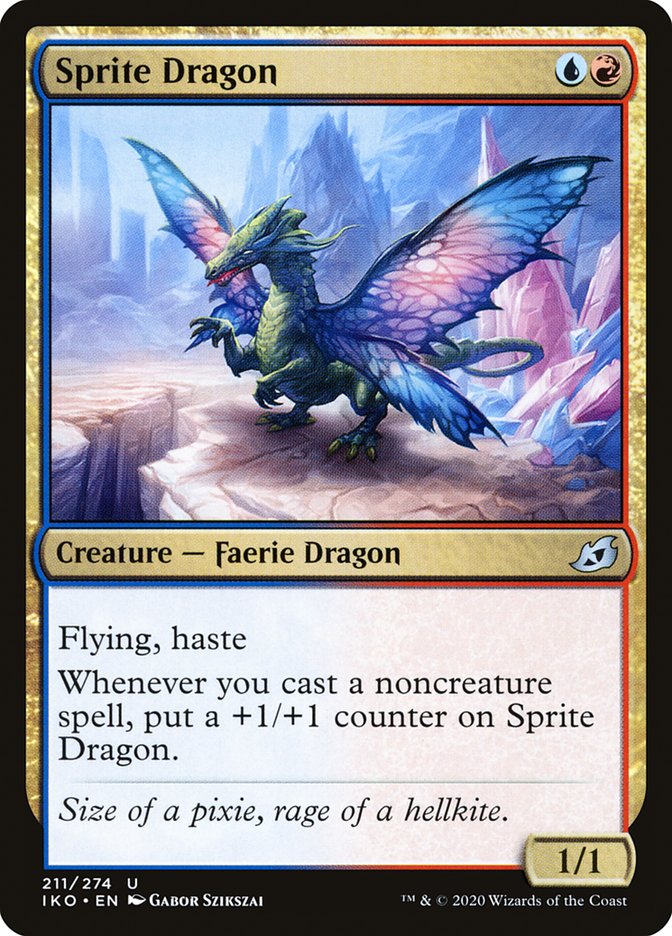
For every staple card in a 60 card 4x deck, there were many more that did not make the cut or had their slot taken when a slightly better option was printed. These cards that are just below the cutoff are the bread-and-butter of singleton formats, but finding them can be tricky. If you play a deck that is similar to an established archetype like Legacy UR Delver, you can find old treasures by looking at winning decklists from years past. Decklists from events immediately after format bans can be particularly fruitful as players scrambled to find suitable replacements.
Limited is another way to potentially discover powerful new cards that don’t make the cut in 4x constructed but are competitively viable in singleton. If your singleton deck is running specific themes or synergies, be on the lookout for new cards when those themes appear as draft archetypes.
4. Supplemental product

Supplemental products can be a great source of new playables if you can find them among the deluge of 5 mana commander cards.
5. Banned cards

It can be surprisingly easy to forget about banned cards, especially if you have a background in competitive constructed formats in organized play. Here is a Scryfall search of some of the finest cardboard Magic had to offer and then rescinded. Speaking of Scryfall…
6. Using Scryfall
Scryfall is the best way to search for cards. You can familiarize yourself with the search syntax here. Some common search patterns I use are:

If I want to look through all the new cards of a particular type and/or color, I use -is:reprint in conjunction with setting sorted by to Release Date, which will default to sorting from newest to oldest.

For when you want to see what the most expensive cards from a set are.

o searches the oracle text of cards, and is very powerful for finding cards of a desired effect.
Where can I find decklists?
Canlander
CanlanderWinnersArchive
An aggregate of top cut lists from many different metas and large tournaments.
VictoriaCanlanderWinners
An archive of finals lists from Yellowjacket Comics in Victoria BC, the birthplace of Canlander.
CanlanderDatabase
A curated collection of sample decklists of a diverse range of decks. Good for beginners!
BWheelerMTG
Wheeler is a prolific deckbuilder with a broad range of sample decklists. Unfortunately you can’t filter by format on a Moxfield user’s profile.
Community member @Cyclopes8 compiled a spreadsheet of commonly played archetypes in the Canlander meta that you can find here.
The Canadian Highlander Discord is a great place to source decklists and talk about everything Canlander.
Kelvin Chen is a Software Engineer and singleton constructed enthusiast who occasionally writes articles and then disappears for months.
- Moxfield: hey_kelvin
- Discord: hey_kelvin
